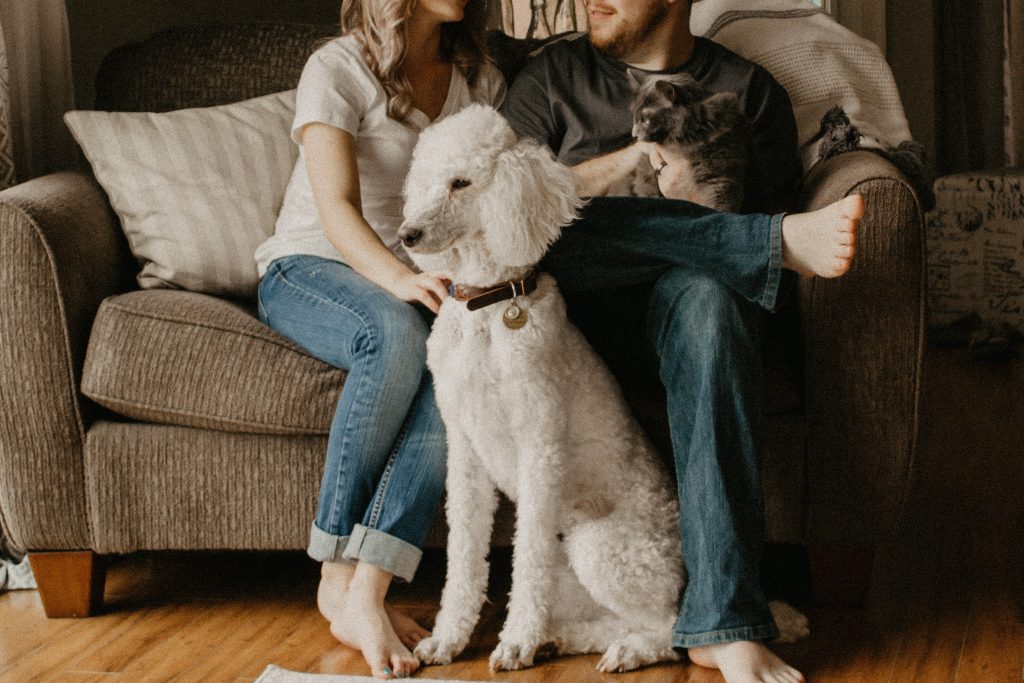Does Co-Living Allow Pets?
Pets have an important role in people’s lives and no one likes to leave them behind when looking for a new place to call home. Co-living in London and around the world is becoming one of the most popular forms of accommodation, particularly for young professionals in London, but it can be very hard to find the perfect co-living space that allows pets.
Before you commit to moving in, whether co-living or another form of accommodation, if you have a pet, you will need to determine whether or not your furry friend will be able to live with you in your new accommodation. You should always check with your rental agent or landlord prior to committing to any rental contract or agreement.
Co-living spaces are rented by multiple people, who all share the same accommodation and facilities. This is one of the main reasons why having a pet can lead to complications and that’s why there are certain pet policies present in co-living arrangements that must be taken into consideration.

Are Pets Allowed In Co-living Spaces?
A co-living space is a form of accommodation in which a group of people live together. The tenants each have their own private room, but they have to share all communal spaces like the living room and the kitchen, which encourages mixing and socialising. When people share spaces it becomes harder to define a set pet policy due to people having differences in opinion with regards to pets.
One of the main points of discussion in co-living spaces is often related to the size of the pet. Smaller sized pets such as small dogs or cats are often accepted due to them requiring less space in a house or flat.
When dealing with multiple people sharing an accommodation there are more variables in question, which require more attention and thoughtfulness in order to create a co-living space that suits all of the renters. It is important to consider all points of view in regards to pets.
For these reasons, not all co-living arrangements allow pets, but there is a difference in policy when comparing traditional co-living spaces and accommodation and hotel-like co-living buildings.
Pets and Co-living
In traditional co-living spaces, where the building is usually a residential house turned into a functional co-living space, the landlord has the power to decide if the property is going to have a pet-friendly policy or not. Many factors like the internal plan of the house, the presence of an outside space or personal reasons can influence their decision. If you are looking into one of these accommodation types, inform the owner and make sure that owning a pet in your potential new abode is allowed.
For traditional co-living houses, being pet-friendly is one of the main features of the accommodation and it is a very attractive characteristic to many young tenants and renters.
In “hotel-like” co-living spaces, the pet policy is often different. In this kind of accommodation, people live in large buildings where they often have small private rooms and the majority of the time is spent in the dedicated communal areas. This kind of format makes the presence of animals harder to cope with and that is the main reason why they are not allowed.
Most “hotel-like” co-living buildings don’t allow pets, but there are some other properties that offer pet-friendly blocks of flats. These feature outside areas and even provide events for tenants and their pets.
Co-living Spaces That Allow Pets
Co-living spaces in London that do allow pets have a clear set of rules for all of the pet owners.
- They have dedicated indoor and outdoor spaces. Residential buildings that allow pets have areas where people can take their pets to play and socialise with other pets
- They organise events for pet owners and their pets
- The pet owners must keep in mind other people’s degrees of familiarity and comfort levels when it comes to pets. Not everyone is a pet lover and it is common for certain people to fear big dogs or cats
- When in the communal areas the animals must be kept on leash to avoid encounters with other pets that could be unpleasant. When two pets engage with each other, the reaction they are going to have towards each other is unpredictable and that’s why it is important to keep them on a leash
Why Don’t Landlords Allow Pets?
There are four main reasons it is easier for landlords to not allow pets in their property:
- Potential damage to the house. Landlords don’t want to risk potential damage to the furniture or to the outdoor space if it is gardened.
- Health and safety. Having pets in spaces where other people are going to live, might create an environment where they feel frightened and are at risk of allergies.
- Respect the space where other members of the household live. Not everyone loves pets and being in a shared living space, this has to be taken into consideration.
- Not being a pet lover. Personal reasons like not being a pet lover can influence whether or not Landlords allow pets in the space or not.
Not every co-living accommodation allow pets and it is something relative to the individual policies of the property. For these reasons, whenever searching for an accommodation, always notify the administrators of the space in order to ensure that they allow pets.
